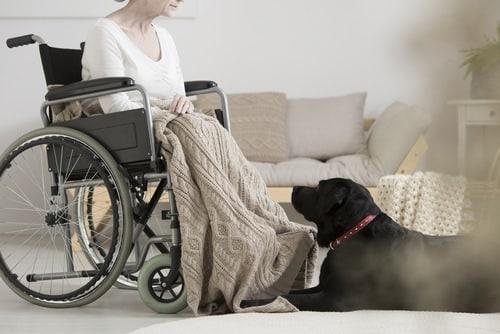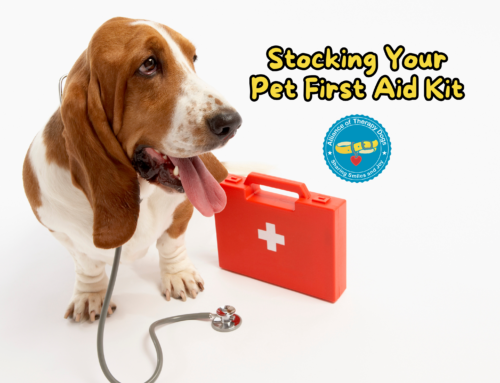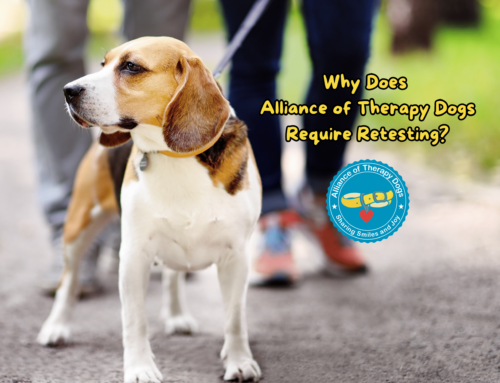Once you have decided to become a therapy dog advocate, the question of where to take your furry helper begins. There are a variety of venues that benefit from visits by therapy dogs and their owners, but organizing visits can occasionally be complicated. You may have to persuade organizations of the benefits, and you’ll need all of the relevant paperwork in place as well. However, with the growing interest in therapy dog visits, it might be easier to organize a visit to a new venue than you think. If you’re new to therapy dog visits or you’re looking for new places to take your dog, then here are some tips on how to find and organize the visits that will have a real impact on the recipients’ quality of life.
First Steps
Before you start to organize and plan a visit to a venue, it’s a good idea to get certified. There are a variety of organizations available that you can sign up for, and there are several benefits to doing so. Not only will you then be affiliated with a recognized organization, but their insurance will also cover you. The Alliance of Therapy Dogs (therapydogs.com) can provide you with insurance and a wide range of connections, as well as links to organizations that are willing and eager to accept therapeutic dog visits. This is by far the simplest way to organize visits to venues that already have an established relationship with the best programs.
School Visits
Schools across America have recognized the benefits of therapy dog visits for easing the stress of students. That’s because being in school, especially around exam times, can be incredibly stressful, and can cause emotional and relationship problems. Therapy dogs provide that comforting presence that can go a long way to alleviating stress, allowing students can better focus on their workload.
More schools than ever are developing relationships with therapy dog organizations, but that doesn’t mean that you can just wander into the school grounds without permission.
Contact the school that you’re interested in visiting. You may find that administrators and teachers are wary, and even if they are keen from the outset, there are still barriers in place. They may be concerned about safety issues, allergies and worried about the potential for liability claims in the case of any incidents. You may need to provide a detailed plan that covers the benefits and coordinate your approach to the right people. Being part of a recognized and established therapy dog organization can be enormously beneficial if the school has never had a therapy dog visit before. It might take time to set up your first visit, but with the wide range of benefits that students and teachers can get from those visits, the time is well-spent.
Hospital Options
There are now numerous studies that show how effectively therapy dogs can help to alleviate stress and anxiety. Hospitals are key locations for owners of therapy dogs, but it can take a lot of time and planning to arrange an initial visit. For the waiting room or hospital room visits, you will need to contact a variety of people within the hospital ranks. Start with the HR department, and they will help to guide you to the best people to speak to. With therapeutic dogs offering patients a little hope, optimism, comfort, and joy, you might find that hospitals are more inclined to arrange a visit than you assumed.
Don’t merely consider the basic hospital set-up either. Look at veteran’s hospitals and psychiatric facilities as well.
Remember, visiting a hospital will be very different from visiting locations like a school. Hospitals will need to be a lot more stringent in terms of their regulations and will have critical essentials in place that you and your therapy dog will need to be able to meet. You will usually find that being affiliated and registered with a recognized therapy dog organization can speed up the process, and will make it easier for hospitals to incorporate you and your therapy dog into their patient treatment plans a lot more efficiently.
Workplace Trips
While a considerable number of businesses have incorporated a ‘bring your dog to work’ day, these are not the same as therapy dog visits. However, employers are growing a lot more open to the notion of a therapy dog visitation, especially if they feel that their employees are unduly stressed.
Workplaces can benefit in a variety of ways from a therapy dog visit, which can lead to improved team-building, better staff contributions, and even morale-boosting. Workplaces are certainly somewhere worth considering visiting with your therapy dog.
You may find that local businesses are wary of the benefits, but presenting them with the studies that show the potential workplace benefits can often make them far more open to the idea. Again, being linked to an established organization can help.
Nursing Homes
The elderly can get many benefits from visits by therapeutic dogs. For self-esteem and morale, they are a fantastic way to help alleviate boredom and loneliness. The majority of nursing facilities will not allow residents to have their pets, so therapy dog visits are generally enthusiastically encouraged.
The elderly are more likely to have compromised immune systems, so your dog will need to be healthy, clear of parasites, and completely up to date with all of the necessary vaccinations. Generally, you will also need to have some form of liability insurance, although if you are a member of a recognized therapy dog organization, this can help to speed up the process. It means that you will be able to offer real help to those elderly residents that may have problems adapting to new living conditions, socializing, or coping with loneliness.
These are the most common locations and venues where people will receive the most benefit from a visit by you and your therapy dog. Always make sure that you understand the rules of each venue, as there may be location-specific guidelines for every place that you visit. It’s also worth visiting the site beforehand without your dog so that you know more about what to expect. If you spend planning a visit to a new place, the more likely that you and your therapy dog will be able to relax, and that means that the people you’re hoping to benefit will simply get more from the experience.






